
|
P-39 Airacobras related to G.A. Rechkalov, 16 GIAP
|
| |
Grigoriy Andreevich Rechkalov with 56 confirmed personal victories and 6 shared
victories (www.wikipedia.com) is the third highest
scoring Soviet pilot in World War II. Other sources (www.airaces.narod.ru)
state 61 personal and 4 shared victories. These numbers include also 3 victories
from 1941, which are in the Unit documents but were not officially assigned
to him.
G.A. Rechkalov was awarded twice Gold medal of Hero of the Soviet Union. He
served with 16th Guards IAP since the summer of 1942. The regiment began transition
on Airacobras on January 1st, 1943. The first P-39 Airacobras began to arrive
for 16 giap only on March 11th. The Pilots had to ferry them themselves from
Teheran. By April 3rd, 1943 the regiment had been reformed and departed to the
North Caucasus front to be part of the 216th Mixed Air Division, which later
became the 9th Guards Air Division (GIAD). The regiment arrived at Krasnodar
airfield on April 8th and began combat operations already on April 9th, at the
very beginning of the battle for the Kuban. (www.lend-lease.airforce.ru).
The following article is the summary of the discussion about P-39 Airacobras
of G.A. Rechkalov I have started at http://sovietwarplanes.com/board/index.php?topic=2043.0.
The discussion tried to find answer for question – how many and what Airacobras
did Rechkalov fly and how did they look? The color profiles reflect my interpretation
of the discussion outcomes.
P-39D-2 s/n 41-38547 was among the first Airacobras delivered to the 16 giap.
According to E. Pilawski it had the fuselage number "40" and it was
the first Rechkalov's Cobra. The same aircraft is mentioned as Rechkalov's Cobra
also in the article Early Versions of Airacobra Aircraft in Soviet Aviation
by Valeriy Romanenko at
http://lend-lease.airforce.ru/english/articles/romanenko/p-39/part2.htm,
but without the fuselage number. Rechkalov flew his P-39D-2 s/n 41-38547 from
beginning of April 1943 only several days until this Cobra was destroyed in
mid April 1943 during the first ten days of the Kuban battle.
The fuselage number "40" was also on Babak's Cobra P-39D-2 s/n 41-38416
from 45th (100th Guards) IAP since February 16th, 1943, the moment when the
regiment was sent back to the front after the transition training. Babak flew
his P-39D-2 "40" until April 26, 1943. 45 iap was part of the same,
216th Mixed Air Division as 16 giap – the unit where Rechkalov belonged.

There is not known photo of this Cobra up to date, so I estimated its appearance
according to the photos of other D-2 from the same unit and time. If there was
really fuselage number „40“ it could possibly look like the number
„40“ on Babak's Cobra.
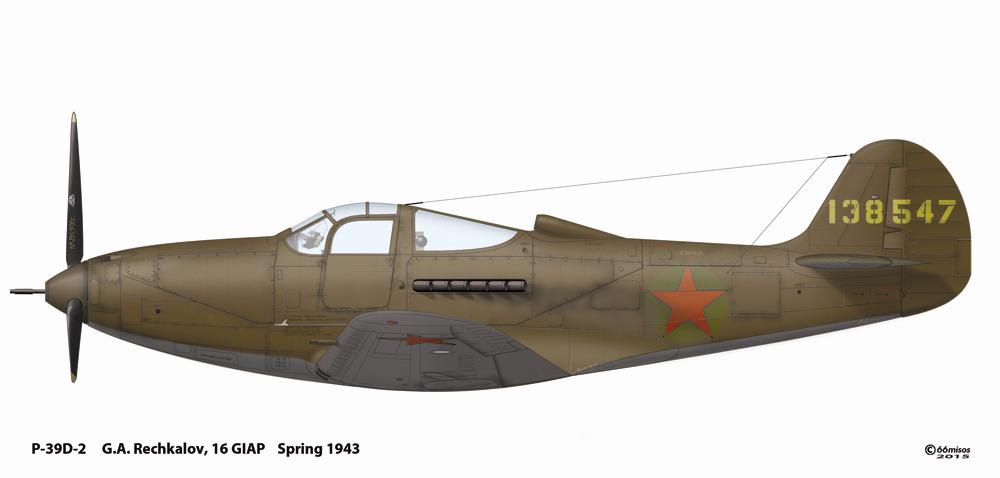
Rechkalov continued to fly, not known on what Cobra. Here is copy of Zurnal boevych dejstvej (Journal of combat actions):
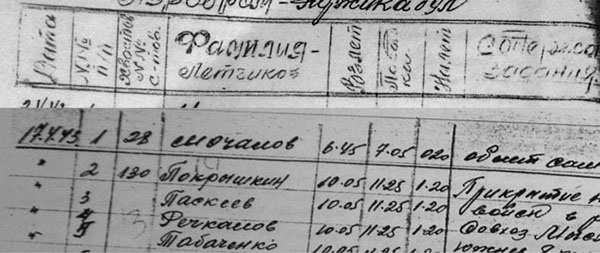
Date April 17th, 1943, Pokryshkin is the second, his Cobra had board number
130. Rechkalov is the fourth, no board number of his Cobra is listed.
In mid May 1943 came the first N-0 versions to 16 giap, Pokryshkin's 29004
"Sotka" among them. Rechkalov was awarded his first HSU on May 23rd,
1943 for 12 personal and 2 shared victories. This is how his new N-0 possibly
could look shortly before his first HSU:
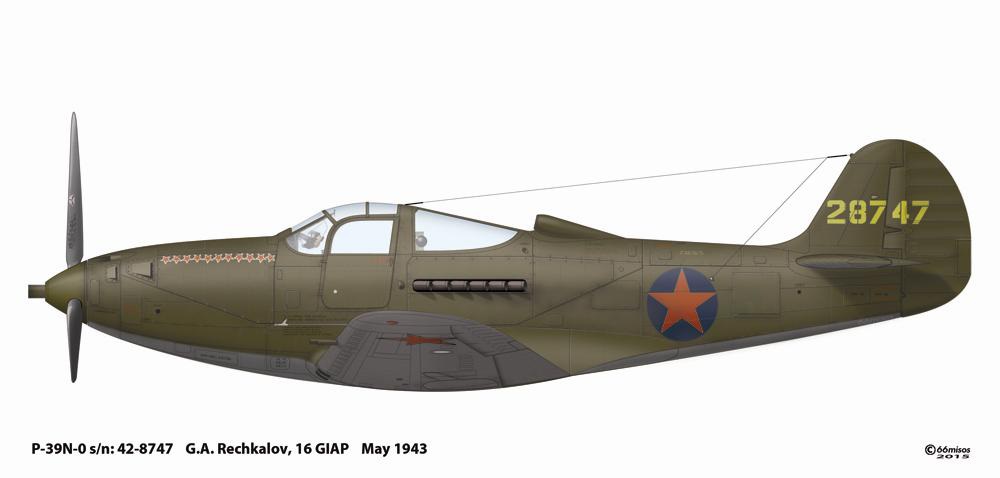
Red stars with white and thin red outline are introduced in summer 1943. Red
propeller spinners and tail caps are introduced in 16 giap a bit later, in autumn
1943.
Here is the summary of the known photos from the different time periods showing
front part of Rechkalov's Cobra with the different number of the victory starlets
and with highlighted some important details:
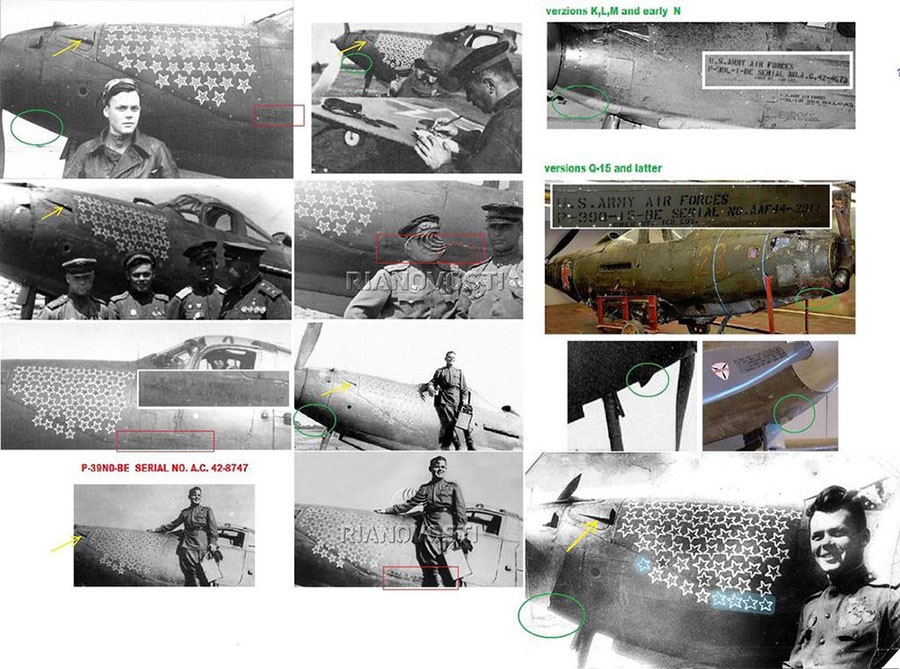
1. a little piece of peeled color on the nose fairings marked by yellow arrow,
2. a little vent on the bottom nose between propeller and front landing gear
leg is missing, it appears on P-39 from versions Q-15 onwards, marked by the
green ellipse,
3. regardless the number of victory starlets there is a factory stencil of the
always the same serial number 42-8747 belonged to P-39N0 version, on the photo
it is in the red frame.
All these details support conclusion that all known photos of the front part
of Rechkalov's Cobra decorated with victory starlets show always the same aircraft.
Following photo shows additional two important details:
1.) Dark disk under the red star is the most probably blue – it is dark
and very regular, unlike the typical Soviet repainting, as seen at
http://www.mig3.sovietwarplanes.com/lendlease/p-39/misos/general.html
2.) This Cobra had wing guns in place like standard N-0 version, not removed
like on many profiles.
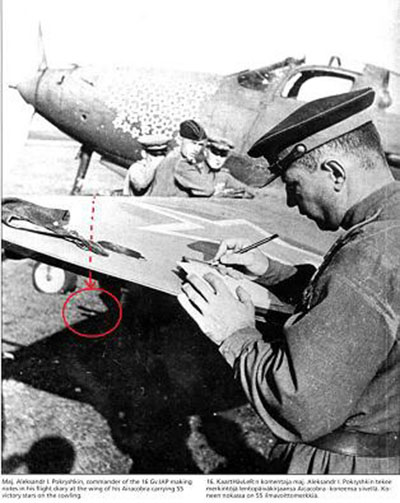
Here are examples of the guns mounted in the gondolas under the wings on the
Q versions.
P-39Q-1-BE, S/N: 42-19483:
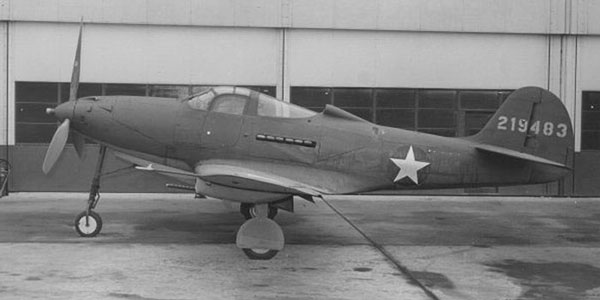
P-39Q-5-BE, S/N: 42-20397:
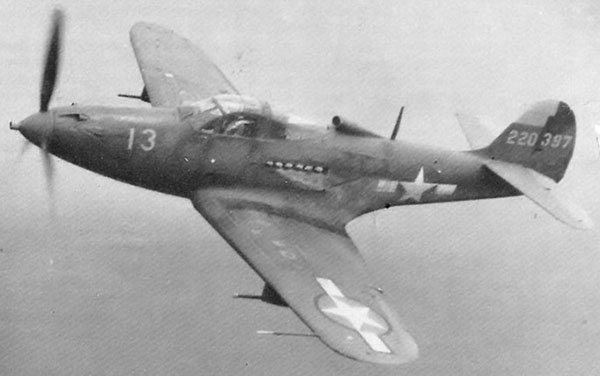
P-39Q-15-BE, S/N: 44-2567
(P-39 Airacobra Aces of World War 2 by G. Mellinger and J. Stanaway, Osprey
publ.), 68 giap. Underwing gondolas with guns are removed:
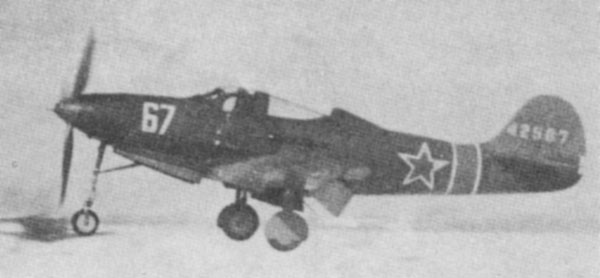
This is the first, oldest known photo of the front part of Rechkalov's Cobra P-39N0 s/n: 42-8747 with 48 victory starlets:

Visible part of the factory stencil shows serial no. P-39N0-... and the piece
of peeled color on the nose fairings.
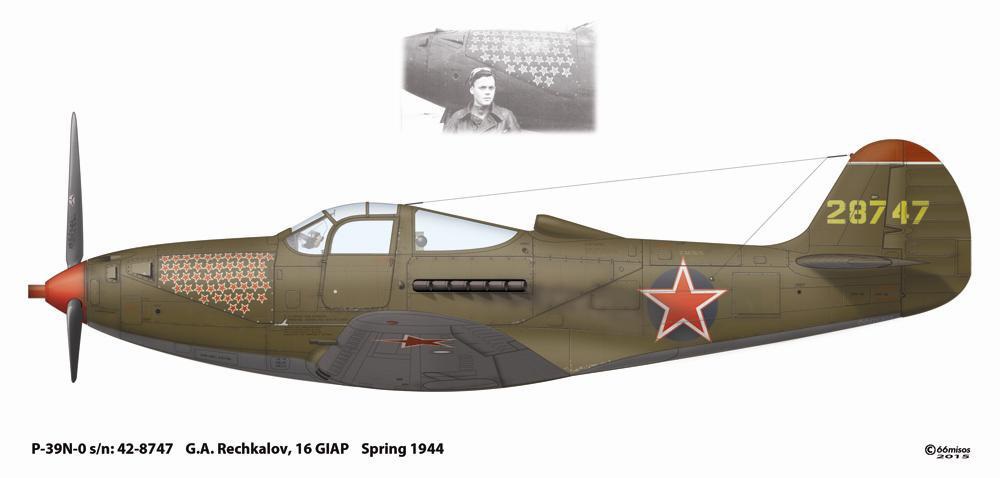
Rechkalov is awarded with the second HSU on July 1st, 1944 for 48 personal
and 6 shared victories. There are several photos from apparently several celebrating
photo sessions, but unfortunately non of them shows complete aircraft. Although
all photos show the front part from the same N-0 version, tail shows serial
from Q-15 version.
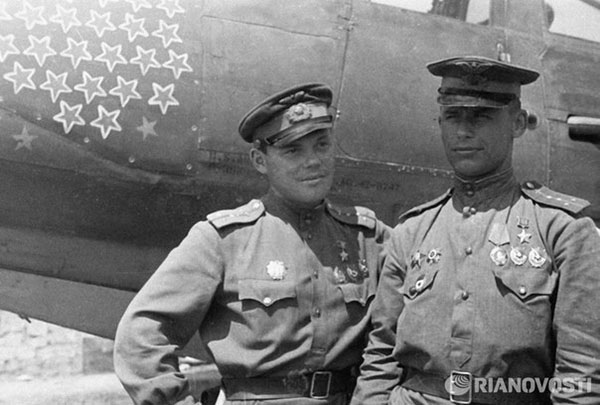
Factory serial number 42-8747 is clearly visible.
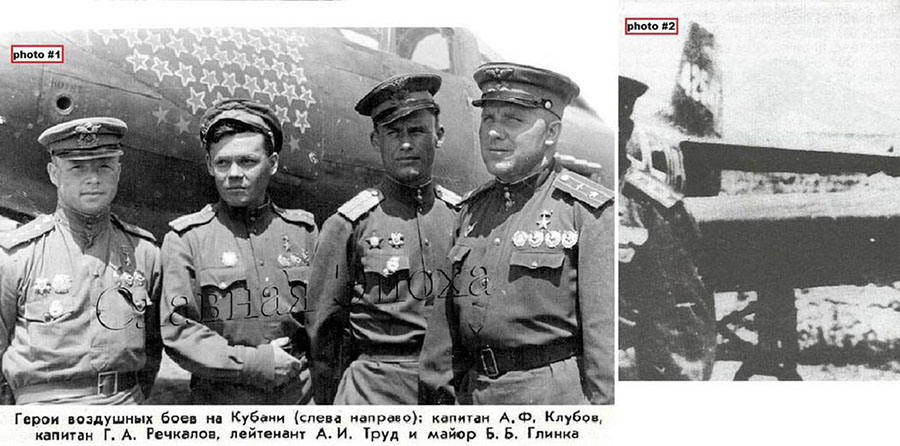
When comparing these two photos the matching is almost perfect; the minimal
difference is only due to the slight different angle when the shots were made.
All the details of the person partially visible in the left side of photo on
the right (such as the cap, military ranks on shoulder, medals, the light corner
of the frontal pocket…) match with those of Major B.B Glinka on left photo.
Moreover the prospective of the plane is very similar on the both photos. It
simply looks like two photos of the same group of people and the same aircraft
from one photo session after July 1st, 1944 when Rechkalov was awarded with
the second HSU, but before July 14th, 1944, when B.B. Glinka (on the right side
on photo#1) was shot down and spent next months in the hospital.
This opened discussions about replaced tail with or without rudder. The rudder seems to has different color from the fix part of the tail, but it could be matter of different angle/reflection, different material weathering etc. Unless I have photo from the right side I would prefer idea of the whole tail replacement, rudder included.
"Sukhov's wrote in his memoirs book Eskadrilja vedet boi (The squadron is fighting):
"Alexander Ivanovich came. Klubov's Aircraft mechanic Gregory Shevchuk
reported him:
- Fighter is deformed, the fuselage is formed like "accordion", tip
bent, torn flap holes ...
Klubov, in a wet tunic with salt stains, jumped off the plane and also surprisingly
stares at his plane:
- Wow, how how twisted is overseas technology! I did not think that the plane
will fail... said Klubov with smile.
Now it was clear why this type looked strangely - fuselage was deformed, antenna
gone, the transmitter has moved from its place, the hellish congestion even
cut the bolts...
End of august 1943.
Rechkalov was a bit unlucky. He hit "Ju-87", but when flying away
from attacked plane, he pulled on the stick too much, very sharply and his "Cobra"
deformed."
e.g. Klubov's and Rechkalov's Cobras were deformed by overload during wild
flying maneuvers.
Even if Sukhov's memoirs do not fully confirm, they at least support theory
about replaced tail and/or reinforced fuselage on Rechkalov's Cobra.

Here is nicely visible how the tail was fixed to the fuselage:
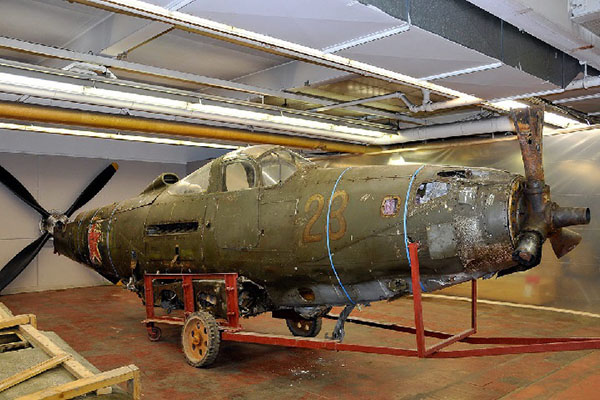
Here we can see how L-L Cobras were transported to SU - wings and tail removed:
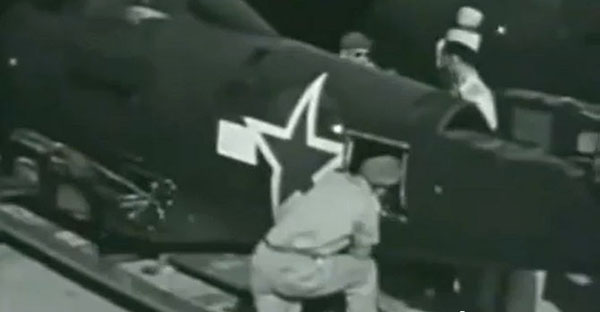
So fixing/assembling the tail was standard procedure. And I would say that replacing
could be done via the same or very similar procedure.
Was yellow tail number so important? Yes to some extent. But there are examples
of VVS Cobras with serial number on the tail repainted/deleted, Sukhov's "50"
from 16 giap as example. Seems that serial number on the factory stencil bellow
cockpit door was enough for aircraft identification regardless what was or was
not on the tail.
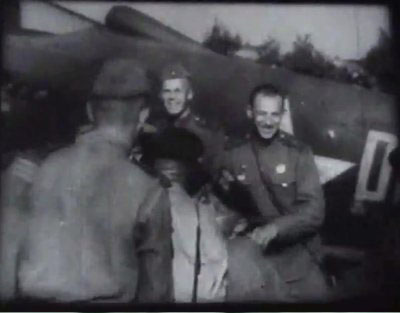
Moreover, the darker area between star and letters RGA brings thoughts about
reinforcement of the rear fuselage, not so unusual in that time. It corresponds
to the reinforced area, here done locally by Soviets in August 1944 (only latter
Q versions were reinforced in Bell factory):

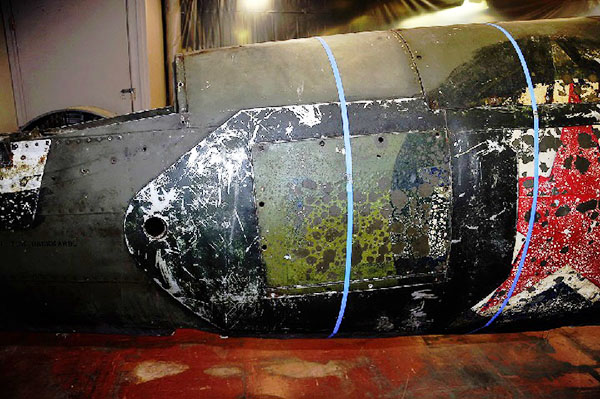
It is not known whether it could be related to the tail replacement.
So this profile features 54 (49+5) victory starlets, replaced tail and reinforced
rear fuselage:
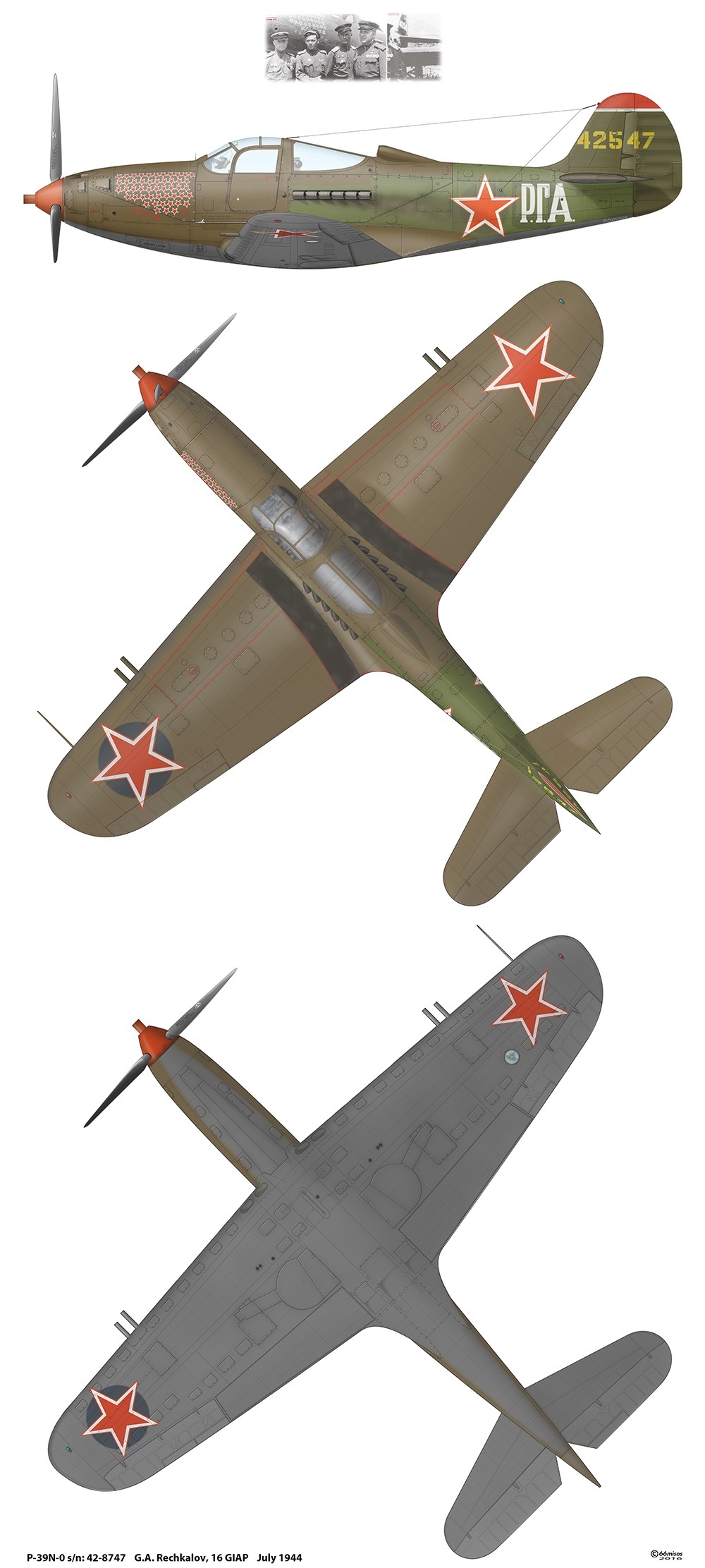
Almost two months later, on August 19th, 1944, Pokryshkin is awarded with his third HSU. As usually he is photographed and filmed not in his, but in someone's else Cobra - this time in Rechkalov's P-39N0 s/n: 42-8747, now with already 55 victory starlets:
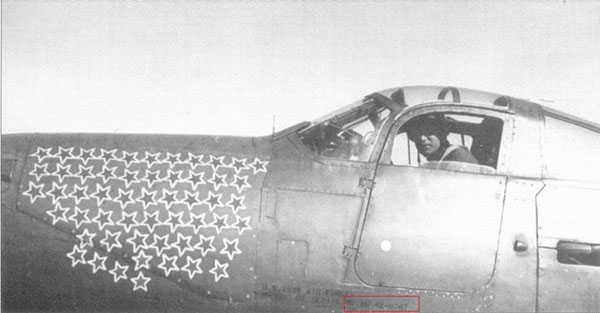
New, never seen before series of photos made in late August 1944 when Pokryshkin
received his 3rd HSU gold star were posted at VIF forum https://www.vif2ne.org/nvi/forum/0/0.htm

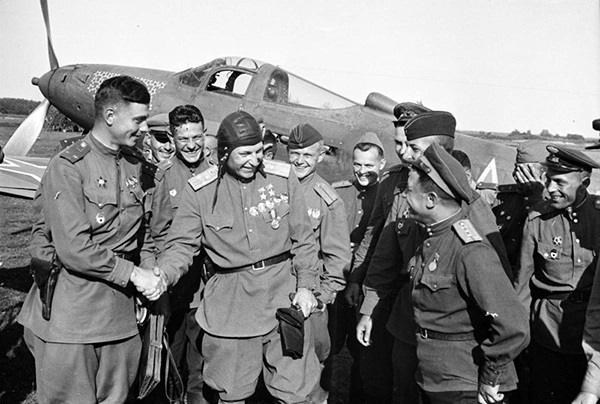
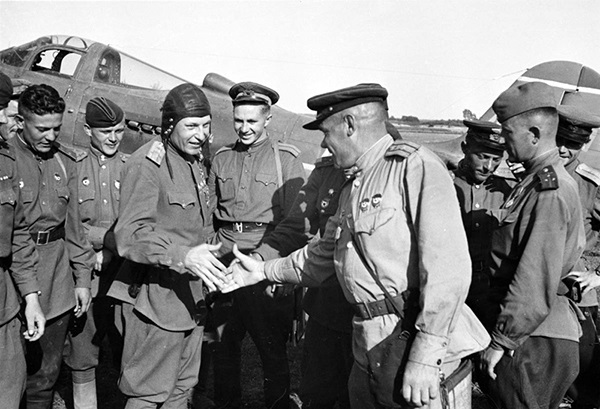
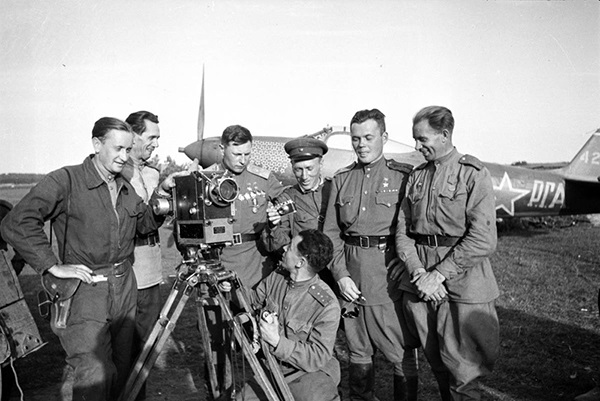
Photos above were made by the famous photo correspondent Arkadiy Shaihet. On
this series of photos, Rechkalov still has 1 golden star and Pokryshkin has
2 stars - everybody is cheering Pokryshkin for his 3rd HSU star, but he was
still wearing only 2 stars. The photo session was probably made sometime between
August 19 when Pokryshkin was awarded 3rd golden star and September when he
returned from Moscow with the medal.
Well, what new can we see at these photos?
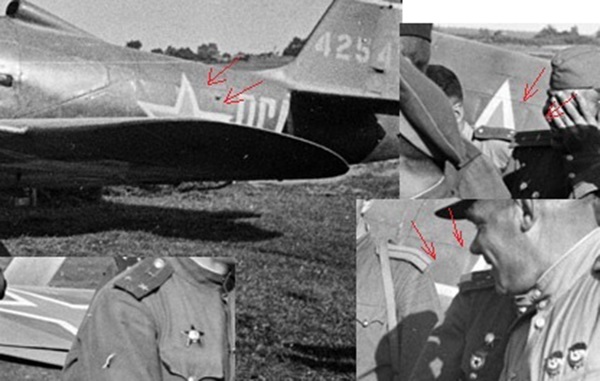
- letters RGA are closer to the horizontal stabilizer, half of the letter A
is below it,
- there are dots after each RGA letter,
- fuselage star is much larger than original red star,
- I would say that there are remnants of the overpainted white disc around the
fuselage star, but much less prominent than on the left upperwing. Probably
original blue disc was during repair oversprayed with some VVS green paint in
a thin layer, not strong enough to completly cover blue color; it is exactly
there where one would expect a blue disc (compare to the white disc on Sukhov's
50 below),
-not sure whether the rudder is of lighter color than rest of the tail, or it
is only a game of light/shadow,
-white line under the red tail „pilotka“ is quite wide.
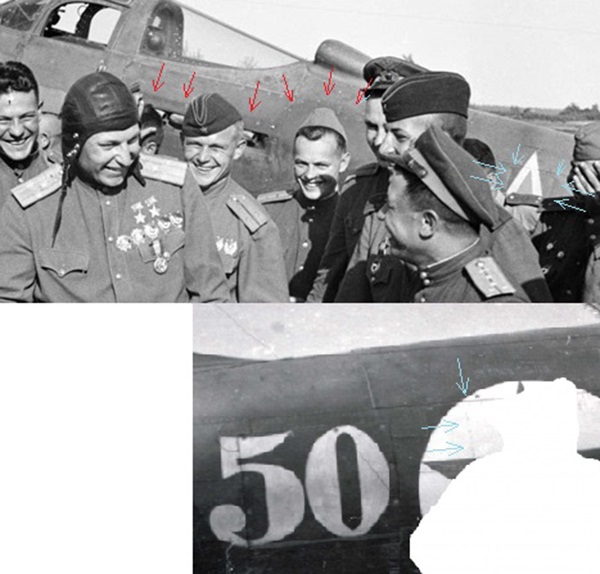
- note baggy panel around rivets lines (blue arrows) on the sides of the top
arm of the star, compare it with the same area on Sukhov's 50,
- note repainting on the engine cover (red arrows).
These pictures support (if not confirm) the theory that whole rear part of Rechkalov's
Cobra was substantially repaired and repainted resulting with the new bigger
fuselage red star without original blue disc.
The following photo, also posted on VIF forum, shows that spinner has the color
apparently different from the front fuselage, e.g. the spinner has been red
like spinners of all other 16 giap Airacobras that time:
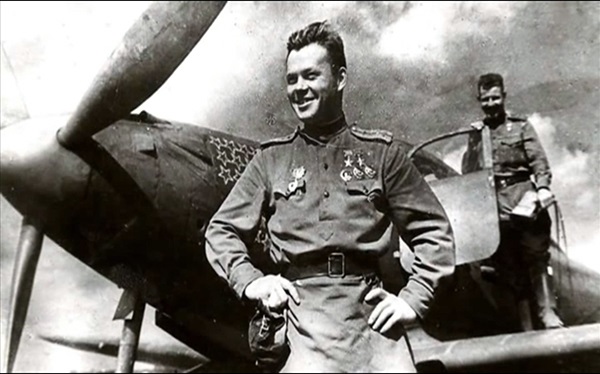
So here it is, the updated profile:
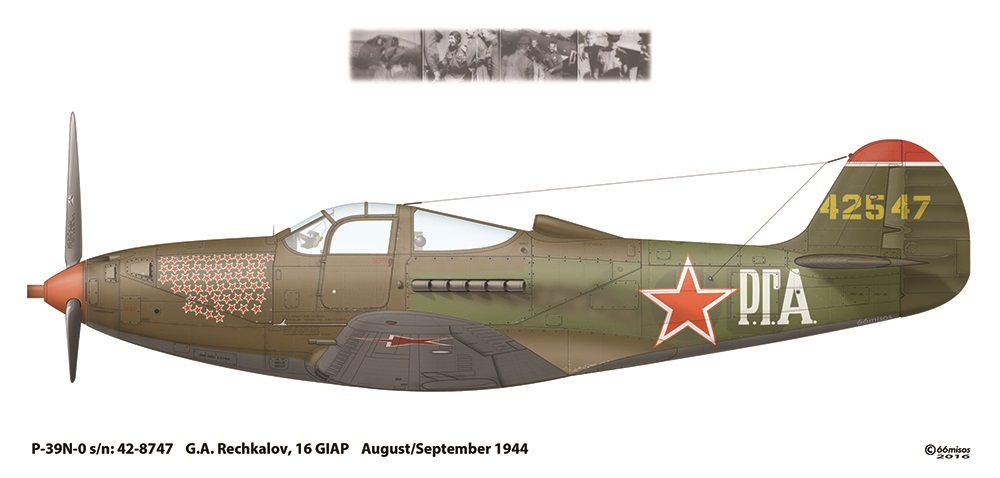
And this is the last known photo of Rechkalov's Cobra version N-0 sometime before
end of WWII with 60 victory starlets. However, those five additional starlets
seems to be retouch.
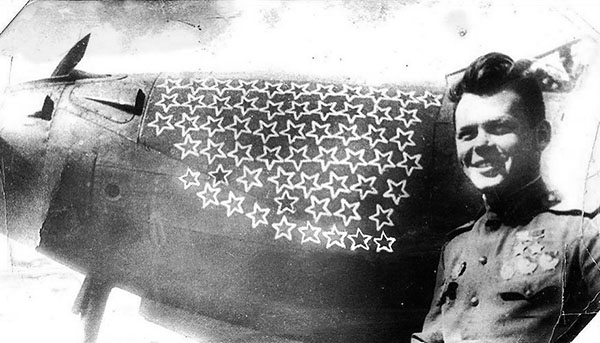
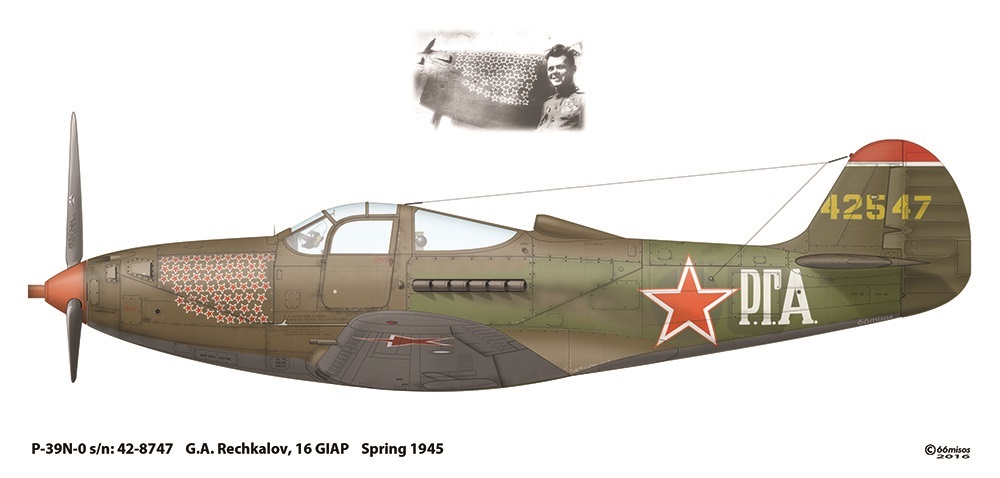
References:
Discussions at www.sovietwarplanes.com,
http://vif2ne.ru/nvi/forum/0/0.htm
and www.modelforum.cz
Pokryshkinskiy aviapolk - Nelakirovannye boevye chroniki (Pokryshkinsky
Regiment - unvarnished combat chronicles) by A.I. Tabachenko
A lot of sites on Internet, mainly www.scalemodels.ru,
www.airaces.narod.ru and http://lend-lease.airforce.ru/english
My great thanks especially to Massimo and KL from sovietwarplanes.com for their
help.